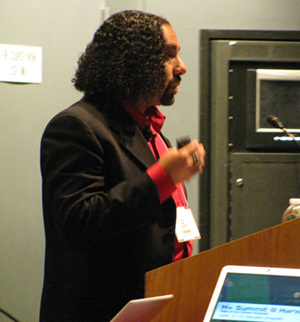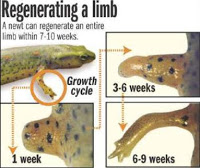
Ramez Naam is up now, outlining his vision of “The Next 10 Years of Human Development.” (Bio, slides, on-the-fly transcript.) Naam is the author of the 2005 book More Than Human: Embracing the Promise of Biological Enhancement, which Charles Rubin reviewed in The New Atlantis here.

He starts out his presentation by asking what the motivation of transhumanism should be. The answer, he says, should be medical treatment, adding that “the power to heal is the power to enhance.” For example, all the advances in longevity we’ve had so far have come from medicine, he says. (I may have misheard his remark*, but that claim is almost certainly false — improvements in sanitation and nutrition have had at least as much as medicine to do with the lengthening lifespan. Still, his point is clear.)
Naam continues by running through the current state of knowledge about genetics and genomics, describing the genome as “digital,” and asking “If the genome is digital, can we edit it?” (This is a common metaphor, and a profoundly inadequate one, as the burgeoning science of epigenetics makes clear.) He then describes briefly how we’ll supposedly soon be able to order up embryos made-to-order with a specified genome: the arrival of “designer babies.” After that, he says, the next step will be incorporating into human beings elements of non-human genomes — and he shows a slide of a newt regrowing a limb (shown at right).

